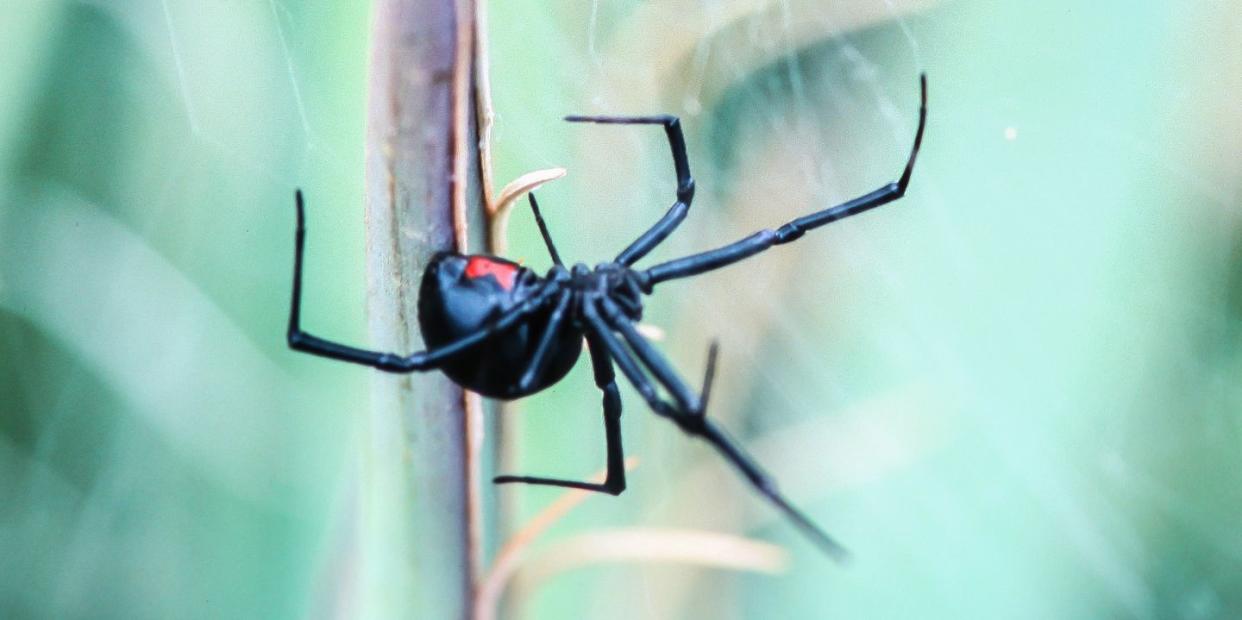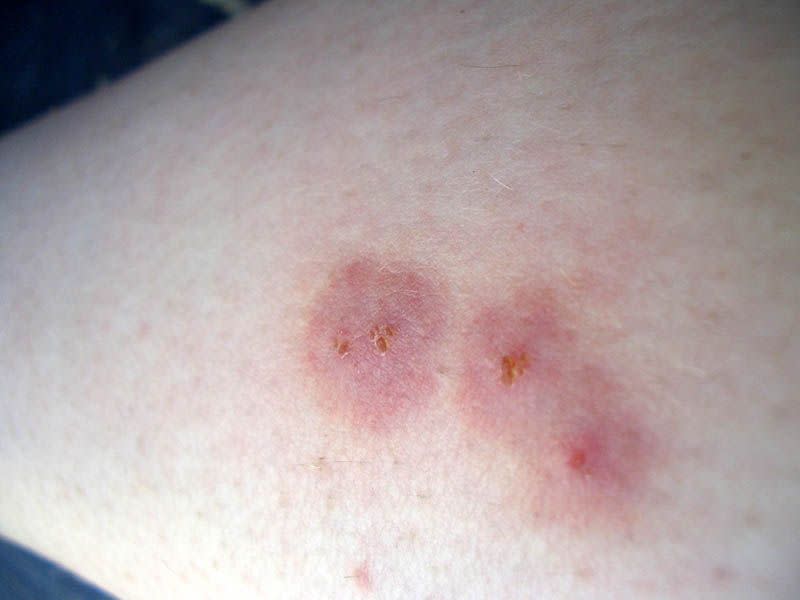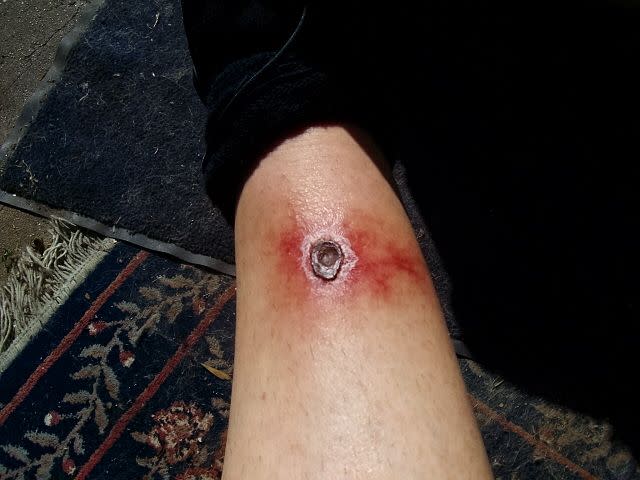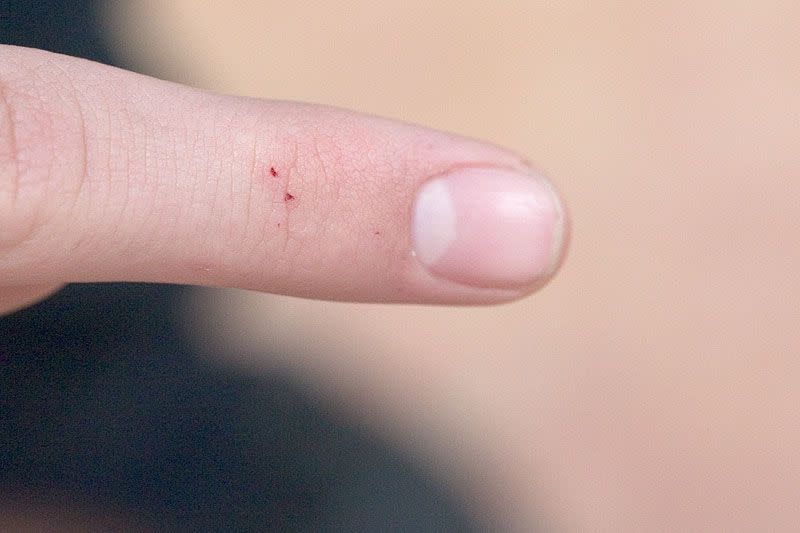Think You Might Have a Spider Bite? These Pictures Can Help You Figure It Out

It’s only natural to assume that you’d know when you’ve been bitten by a spider. After all, when you live through a huge fear, you’d think you’d be aware that your nightmare has just come true. Still, it’s 100% possible to notice a bite and have zero clue what kind of creepy insect it came from.
As a whole, spider bites don’t actually happen as much as people think. “Spiders get blamed for a lot of skin irritations that are not their fault,” explains Nancy Troyano, Ph.D., a board-certified medical entomologist with Ehrlich Pest Control.
That said, spider bites can and do happen. Some are completely harmless—causing just a bit of redness and swelling—and heal up after just a couple of days, while other venomous bites can cause serious complications, especially if you don’t see a doctor right away.
But how can you know for sure if that bite you’re dealing with is from a spider—and a dangerous one, at that? We tapped a doctor and entomologists for tips on what to look for and rounded up photos to give you an idea of what spider bites could look like. Here’s how to identify them, and what you should do if you’re unlucky enough to receive a bite.
First, why do spiders bite?
Breathe a sigh of relief: Most types of spiders don’t actually go out of their way to bite humans. “Spiders bite humans as a defense mechanism, a last resort to protect themselves,” says Troyano. When spiders do bite, they do so to paralyze their prey—however, you’re not it.
That said, there can be situations where a common house spider (like a jumping spider or wolf spider) might mistake you for prey or feel like you’re threatening them, even if you’re not trying to take them on. Maybe you put your hand in an old baseball glove where a spider took up residence or you happen to accidentally prop up your feet right near where they were hanging out. Whatever it is, an innocent move to you could seem like a threatening one to a spider, causing them to bite.
There is a possible exception, though: Yellow sac spiders—yellowish or pale beige spiders that like to build tent-like silk structures—are reported to be “recreational biters” meaning, “they bite us just for the fun of it,” says Howard Russell, M.S., an entomologist at Michigan State University.
What does a spider bite look like? Are there typical symptoms?

If you’re bitten and see a spider scurrying away, the odds are pretty high that it was the culprit. If you’re not sure where your bite came from, it might be trickier to pin down. “With a few exceptions, it is very hard, even for medical professionals, to positively identify a bite or skin irritation as a spider bite.” Troyano says, and the fact is true for many insect bites. However, there are a few signs that it could be from a spider:
✔️ Two tiny holes: Spiders have two fangs, so you might see two tiny holes in the center of the bite, Russell says.
✔️ Redness and swelling: When a spider bites, foreign proteins from its saliva are injected into your skin, Troyano explains. That can cause a localized reaction that’s similar to what might happen with if you were bitten by a mosquito or stung by a bee. You might have swelling bite, redness, or irritation around the bite site.
✔️ Mild pain: As for what it feels like, Troyano says most people compare it to how you’d feel when you’re stung by a bee—so, not fun.
✔️ Possible itching: This symptom depends on how you personally react to an insect bite, but some spider bites can cause the release of the compound histamine in your body, and that can cause itching, says Nick Kman, M.D., an emergency medicine physician at The Ohio State University Wexner Medical Center.
In the U.S., there are two types of spider bites that can cause more severe reactions: the brown recluse and black widow.
Brown recluse spider bites

The brown recluse—also known as the fiddleback or violin spider—has a distinct violin-shaped marking that starts at the top of its head and goes down its back. It’s also identified by its six eyes instead of the typical eight. It likes to hide in homes—preferably in dark, undisturbed areas like closets, shoes, or basements—and sheds, most commonly in the Midwest and southern states, according to the Centers for Disease Control and Prevention (CDC).
The brown recluse cannot bite a human without “some form of counter pressure,” per the CDC—say, you slip your foot into a shoe and trap it. However, its bite can be extremely painful should you be unlucky enough to get one. “In the case of 90% of brown recluse bites, reactions are not severe, but they can be,” Troyano says. “If the spider’s bite includes a large enough dose of hemotoxic venom, it can cause necrotic wounds or lesions that can take months to heal or require surgical repair.” This can appear as a white blister or discolored ulcer and cause other system-wide symptoms like muscle aches and a fever.
Reactions to a brown recluse spider bite can also vary based on the health and age of the person who is bitten, Troyano says. For an elderly or diabetic person who may be immunocompromised, healing from a bite may be more difficult than for someone with a healthier immune system
Black widow spider bites

Identifying a black widow is easy: It has a shiny, jet black exterior with a bright-red, hourglass-shaped marking on the underside of its abdomen. Unfortunately, black widow spiders do like to hang out in homes, particularly in the southern and western parts of the U.S.
You can typically find them in garages or workplaces with lots of debris. Black widows tend to build webs where there are lots of corners, edges, or tall grass—and accidentally stumbling through one of these is when a bite is most likely.
Black widow bites are also rare “but can be extremely dangerous, even deadly,” Troyano says. If you’re bitten by a black widow, you’ll notice two distinct puncture marks and might feel burning, redness, and swelling at the bite site—and this can eventually spread to other parts of your body, the CDC says. Unlike other spider bites, the black widow’s bite injects neurotoxic venom, which can cause muscle spasms, nausea, vomiting, sweating, tremors, and weakness.
If you head to the ER immediately, you should be okay. “There are approximately 2,200 bites reported each year, but there has not been a death related to a widow spider in the U.S. since 1983,” says Marc Potzler, a board-certified entomologist and technical services manager with Ehrlich Pest Control.
So, how long do spider bites last?
If you’re bitten by a generally harmless spider for some reason, the reaction will be “fairly immediate and happen within the first 24 hours,” Troyano says. “Most will go away just after a couple of days.” However, the healing process can become longer if the bite area becomes infected (often signaled by excessive swelling, pain, and feeling hot to the touch).
In the case of brown recluse or black widow bite, it may take weeks to properly heal, depending on the severity of the reaction or if an infection ensues.
How to treat a spider bite
Russell says that most spider bites don’t require anything more than you’d do for a mosquito bite or bee sting, like washing the wound and using hydrocortisone cream. You can also apply ice to the bite itself to minimize any swelling. And, if you find that your bite is itchy, Dr. Kman recommends taking an antihistamine like Benadryl or Zyrtec.
But if you suspect you’ve been bitten by a brown recluse or black widow, you don’t want to take it lightly. If you notice any of the following symptoms, you’ll want to seek medical attention ASAP, as they can also be signs of infection:
The bite spot is hot to the touch.
The bite spot becomes a wound or lesion.
You develop a fever.
You have signs of anaphylaxis (difficulty breathing, swelling of tongue or airways, dizziness, loss of consciousness).
You have moderate to excessive swelling.
You have any neurological symptoms, like muscle spasms, nausea, vomiting, sweating, tremors, or weakness.
If you actually saw the spider that bit you, Troyano recommends trying to capture it and putting it in a plastic bag so you can show your doctor if you end up needing to see one.
Again, spider bites aren’t super common. If you have a mysterious bite that shows up on your body and you’re not sure where it came from, the odds are much higher that a mosquito or similar insect is to blame.
Go here to join Prevention Premium (our best value, all-access plan), subscribe to the magazine, or get digital-only access.
You Might Also Like

